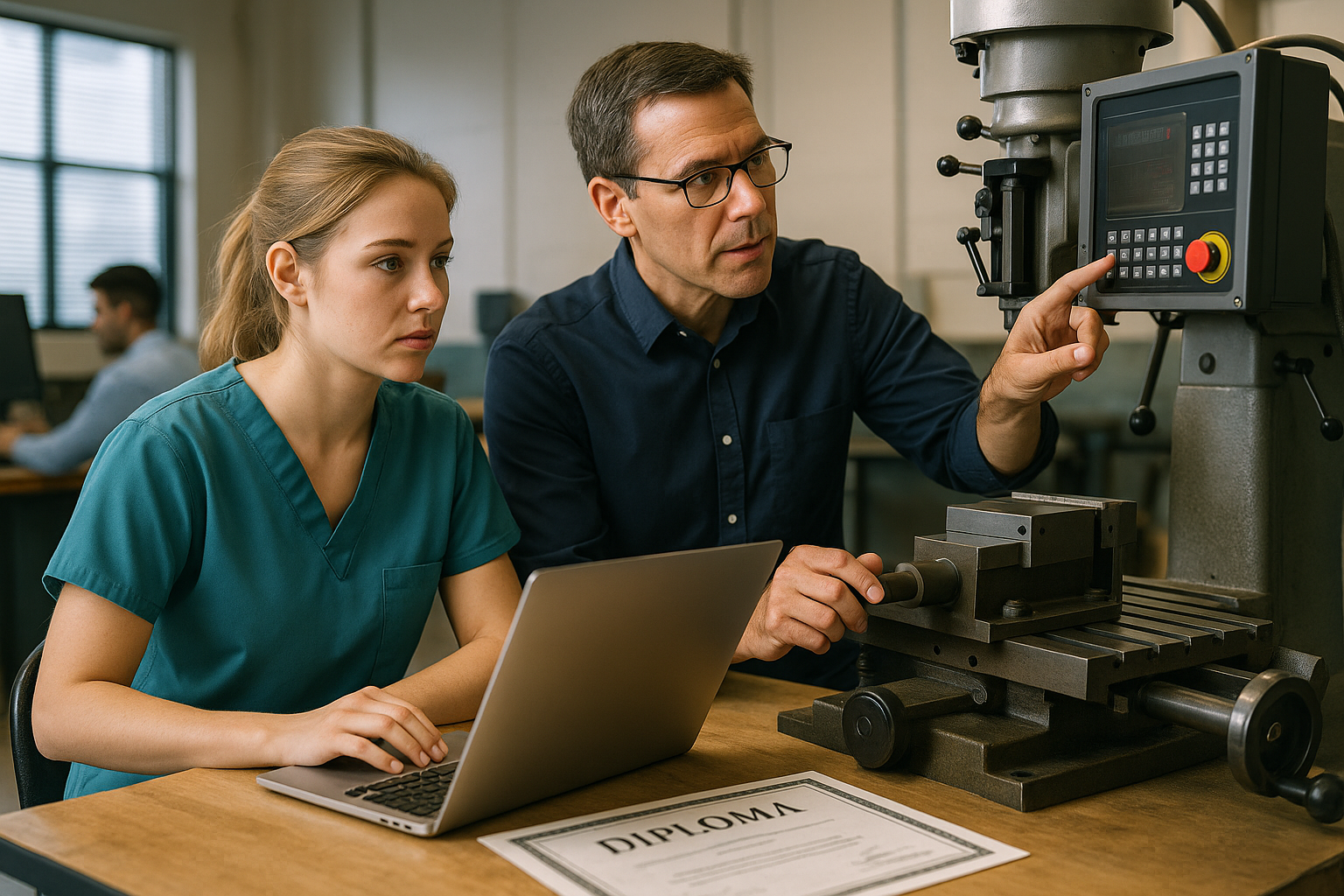Education and apprenticeships for restorative dental manufacturing positions
A career in restorative dental manufacturing combines technical skill, material knowledge, and hands-on precision. Education and apprenticeship pathways introduce learners to prosthetics, prosthodontics concepts, and the benchwork needed to produce restorations. This article outlines common training routes, practical skills developed, and how apprenticeships complement formal certification for those entering the field.

Dental lab technician careers require a mix of formal study, supervised practice, and attention to detail. Entry-level training often begins with classroom courses covering dental anatomy, materials science, and basic fabrication methods. This foundational period introduces the terminology and safety practices used in labs, plus an overview of prosthetics and common restorations. Practical benchwork hours are essential so students can translate theory into skills that technicians use daily.
This article is for informational purposes only and should not be considered medical advice. Please consult a qualified healthcare professional for personalized guidance and treatment.
What does benchwork training involve?
Benchwork training focuses on manual skills used in creating and finishing restorations. Students learn model trimming, waxing, casting, and finishing for crowns and bridges, often starting with simple tasks and progressing to more detailed prosthetics. Instruction covers proper use of hand instruments, polishing techniques, and quality control checks so pieces fit prescribed specifications. Benchwork also emphasizes safe handling of impressions, materials, and equipment to maintain lab standards.
How do apprenticeships support prosthetics and restorations learning?
Apprenticeships pair classroom theory with on-the-job experience under a licensed technician or in a commercial lab. Apprentices perform supervised tasks such as preparing impressions, adjusting models, and assisting in fabrication. This real-world exposure builds understanding of workflow, communication with clinicians, and the sequence of steps needed to complete restorations. Apprenticeships help trainees adapt to production schedules and quality expectations while gaining practical competencies employers value.
What certification and academic pathways are common?
Certification options vary by region but typically include vocational diplomas, associate degrees, and industry certifications from recognized bodies. Programs cover fundamentals like dental anatomy, materials, laboratory safety, and prosthodontics principles. Certification exams may test both written knowledge and practical skills. Continuing education courses allow technicians to specialize—such as in ceramics or CAD/CAM workflows—and to stay current with evolving materials and regulatory requirements.
How is CAD/CAM, milling, and fabrication taught?
Modern programs combine traditional fabrication with digital workflows. Trainees learn CAD/CAM software basics, digital design for restorations, and operation of milling machines for producing crowns, bridges, and implant abutments. Instruction emphasizes the integration of digital scans from impressions or intraoral devices, file preparation, toolpath planning, and post-milling finishing. Understanding digital fabrication complements hand-finishing skills and broadens a technician’s ability to work in labs that use hybrid manufacturing approaches.
What materials and ceramics knowledge is required?
Materials training covers common ceramics, metal alloys, composite resins, and newer hybrid materials. Technicians study properties such as strength, translucency, and bonding characteristics, and how these influence restoration design and processing. Ceramics modules teach layering, staining, glazing, and firing cycles, while materials instruction addresses safety, storage, and handling. Knowledge of materials helps technicians make informed decisions during fabrication to meet functional and aesthetic goals.
How are impressions and clinical communication included in training?
Accurate impressions are the starting point for many restorations; coursework shows how to evaluate impressions, pour models, and identify common errors that affect fit. Training also covers communicating specifications with dentists and clinicians, interpreting prescriptions, and documenting adjustments. Clear communication ensures restorations match clinical expectations and reduces remakes. Emphasis on problem-solving and documentation prepares technicians to work effectively within multidisciplinary teams.
Conclusion Education and apprenticeships for restorative dental manufacturing positions combine classroom learning, hands-on benchwork, and supervised on-the-job experience. Programs that integrate prosthetics basics, materials science, CAD/CAM milling, and ceramics preparation help prepare technicians for varied lab roles. Apprenticeships, paired with recognized certification, offer practical pathways for developing the technical skills and workplace habits needed in restorative fabrication and prosthodontics-related workflows.






